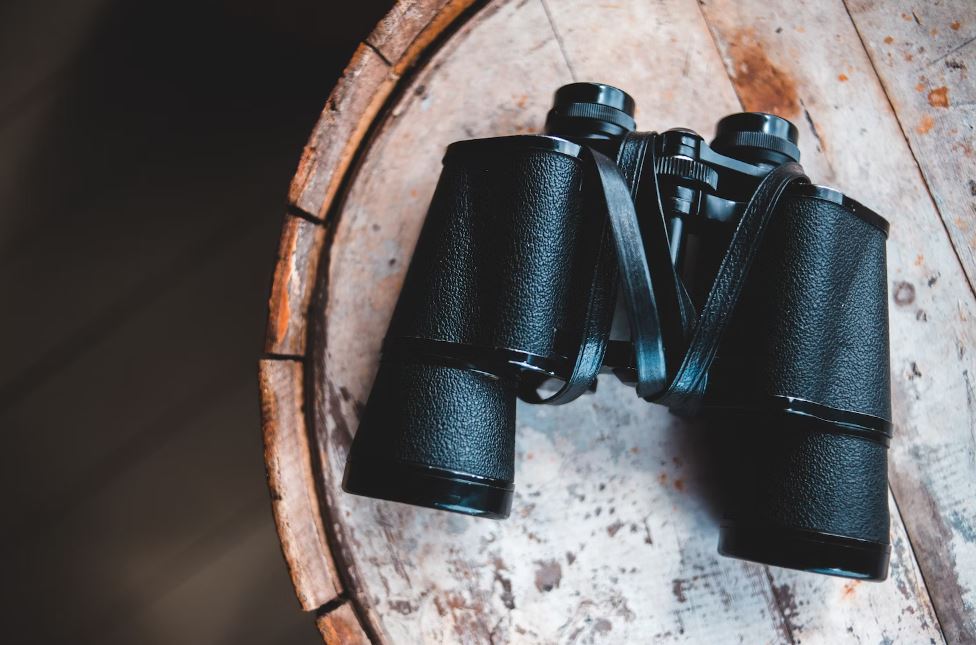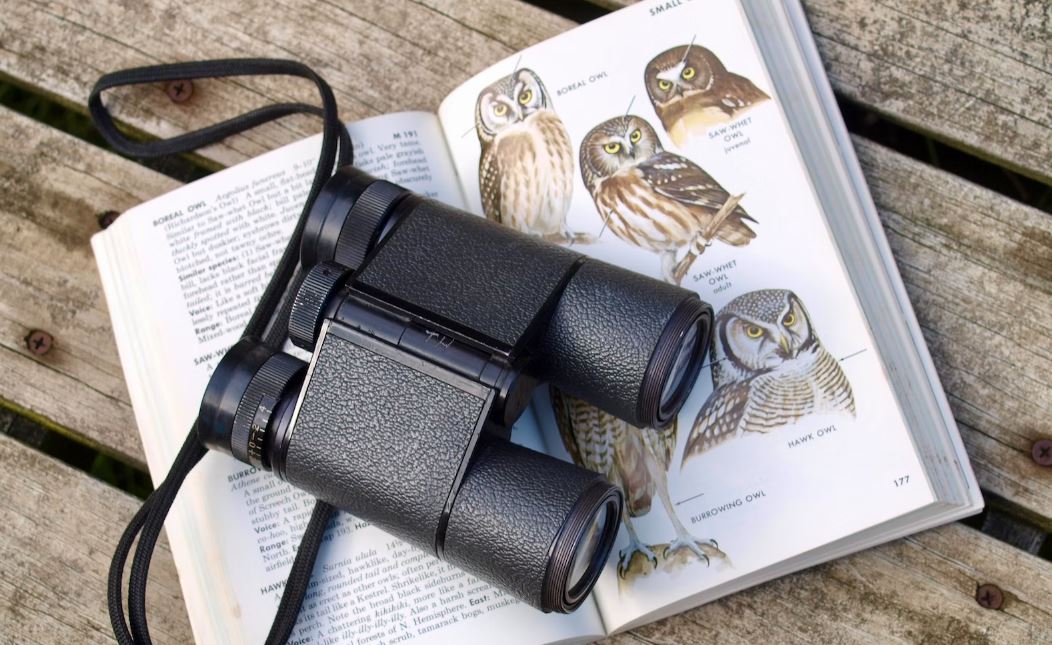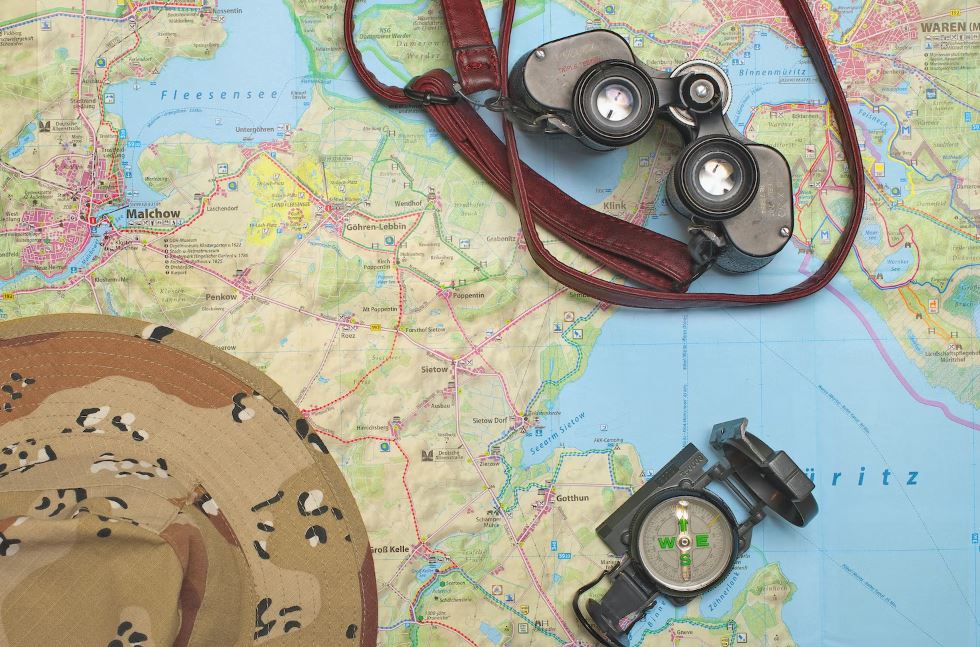Binoculars are multipurpose optical instruments that are frequently used in a variety of activities and hobbies. They enhance visual experiences by providing a closer and more detailed view of distant objects. Because of this, they are indispensable for activities such as birdwatching, stargazing, observing wildlife, sporting events, hunting, and other outdoor adventures. Users of binoculars can see objects with both of their eyes thanks to the device’s two telescopic lenses, which in turn provide them with a three-dimensional perspective and enhanced depth perception. They are available in a wide range of sizes and magnifications to cater to various applications and preferences, making them an invaluable tool for hobbyists to increase their enjoyment and involvement in the activities they choose to pursue.
Because it lessens the image shake and tremors caused by hand movements, image stabilization technology in binoculars is an essential feature for hobbyists. This makes it possible to have a steadier and more clear view of objects in the distance. This stability is especially important for activities such as birdwatching, stargazing, and wildlife observation because it enables hobbyists to observe details and track moving subjects with greater ease and comfort. Other activities include birding, stargazing, and wildlife observation. Image stabilization improves the overall experience by reducing the amount of eye strain that the user is subjected to and maximizing the user’s capacity to enjoy their hobbies for extended periods without becoming fatigued.
What is Image Stabilization Technology?
Image Stabilization Technology is a feature that can be found in a variety of optical devices, including cameras and binoculars. When viewing distant objects, the image will be more stable and clearer as a result of the design of this product, which is intended to reduce the effects of hand tremors and vibrations. This technology typically involves the use of gyroscopic sensors or other mechanisms to detect and counteract motion. This enables users to maintain a steady view even when holding the device by hand because the motion is detected and counteracted. This is of utmost significance for activities such as birdwatching, stargazing, and wildlife observation, all of which require a steady image to provide a satisfying and fruitful experience for the observer.
Image Stabilization Technology differs from traditional binoculars in that it actively compensates for hand movements and vibrations to provide a more stable view. Traditional binoculars rely solely on the user’s ability to hold them steady, which can be challenging, especially at higher magnifications. In contrast, image stabilization technology uses sensors and mechanisms to detect and counteract these movements, effectively reducing image shake and providing a clearer and steadier image. This technology significantly enhances the user’s ability to observe distant objects comfortably and for longer periods, making it particularly valuable for various hobbies and activities.
Why Choose Binoculars with Image Stabilization Technology?
Binoculars equipped with image stabilization technology have a significant advantage over traditional binoculars because they actively reduce hand tremors and vibrations. As a result, viewing experiences with these binoculars are more stable and enjoyable for hobbyists. This technology offers a variety of advantages, which combine to make it an outstanding option for a large number of different pursuits.
1. Steady Viewing
By eliminating the jittery effect that is caused by hand movements, image stabilization technology ensures a view that is consistently stable of objects in the distance.
2. Enhanced Detail
Users can capture minute details and easily follow subjects that are moving quickly thanks to this feature. This is especially helpful for birdwatching, which requires careful attention to even the most minute aspects of a bird’s plumage.
3. Extended Comfort
Because they lessen the amount of image shake that occurs, these binoculars reduce the amount of eye strain and fatigue that users experience. As a result, hobbyists can engage in their chosen activity for longer periods.
4. Astronomy
When observing planets, stars, and other deep-sky objects, astrophysicists can reap the benefits of image stabilization technology, making it easier to maintain a clear and steady view of the observed objects.
5. Versatility
The use of these binoculars can be extended to a wide variety of pastimes and activities that take place outside, such as watching sporting events, observing wildlife, participating in marine activities, or going hiking.
6. High Magnification
Binoculars with image stabilization are easier to use and more functional for a variety of activities, including hunting and landscape observation. This is because image stabilization mitigates the disadvantages of using binoculars with a higher magnification.
7. Reduced Frustration
Users can avoid the aggravation of shaky images, making for an experience that is both more enjoyable and rewarding. This is especially helpful when following subjects that are either far away or moving quickly.
8. Professional Use
When accuracy and stability are of the utmost importance for their line of work, such as photographing wildlife behavior or conducting field research, professionals, such as photographers and researchers, will frequently choose image-stabilized binoculars.
In a nutshell, binoculars that are equipped with Image Stabilization Technology provide a technological advantage that vastly improves the usability and efficiency of binoculars for a much wider variety of professional and recreational uses.
The Impact of Image Stabilization Technology on Viewing Experience
Image Stabilization Technology has a significant influence on the viewing experience, which it significantly improves in a variety of ways, including the following:
1. Improved Stability
Image stabilization helps to eliminate the shaky and jittery effects that are caused by hand movements, resulting in a view that is significantly more stable. This steadiness is especially helpful when observing faraway objects or when using binoculars with high magnification, as it ensures that the subject stays in focus and is easy to follow.
2. Enhanced Detail
Users can capture more subtle details in their subjects as a result of the reduction in image shake. This is especially important for activities such as birdwatching, in which recognizing subtle plumage patterns or identifying bird species can be difficult if the image is not stable.
3. Extended Comfort
Users can view objects for significantly longer periods without experiencing any discomfort when using image stabilization. As a result, there is less strain on the eyes, which makes it possible to enjoy pastimes such as wildlife observation, stargazing, or sporting events without the discomfort typically associated with shaky images.
4. Easier Tracking
Image stabilization makes it significantly easier to keep up with moving targets, which can be very useful in many situations. It doesn’t matter if you’re tracking a bird in flight, a far-off athlete on the field, or a celestial body in the night sky; the technology will make the tracking experience more seamless.
5. Versatility
Binoculars with image stabilization are extremely flexible optics that can be used for a wide variety of pursuits. As a result of their ability to deliver a view that is unwaveringly crisp and unshakeable regardless of the subject matter, they are of equal value to people who enjoy being outdoors, who follow sports, who photograph wildlife, and who do astronomical observation.
6. Reduced Frustration
Image stabilization makes it almost impossible to lose track of a subject as a result of shaky images, relieving one of one of the most frustrating aspects of photography. This results in a viewing experience that is more enjoyable and rewarding for the user because they can concentrate on the subject rather than struggling with the instability.
7. Professional Application
Image stabilization is necessary for professionals working in fields such as research and surveillance photography, for example. It enables them to obtain images and videos that are precise and stable, which guarantees that their work will be successful.
Image stabilization technology has a profound effect on the viewing experience because it improves stability, detail, comfort, and versatility across a wide variety of applications, both in the professional world and in the realm of hobbies and pastimes. It makes distant objects more approachable and enjoyable, which ultimately contributes to an enhanced experience for the user as a whole.
Types of Image Stabilization Technology in Binoculars
Several different types of image stabilization technology can be found in binoculars, and each one has its method for reducing image shake and improving stability. These methods include:
1. Optical Image Stabilization
OIS counteracts hand tremors by employing specialized optics in its operation. In most cases, this involves moving one or more of the lens elements to stabilize the image and reduce the effects of motion blur.
2. Mechanical Image Stabilization
This method of stabilization utilizes movable prisms or mirrors, in addition to gyroscope sensors, as its primary means of achieving stability. Gyroscopic sensors can detect motion and send signals to optical elements that cause them to move, thereby correcting the image.
3. Digital Image Stabilization
The captured image is given an electronic processing treatment that, collectively, results in a shake reduction. It requires cropping, aligning, and processing the frames to create an image that is smoother and more stable. Nevertheless, the image quality may suffer as a consequence of utilizing this technique.
4. Hybrid Image Stabilization
Some binoculars use a combination of optical and digital stabilization to provide enhanced stability and image quality. Other binoculars use a combination of both optical and digital stabilization.
5. Active Image Stabilization
The binoculars’ optics are physically adjusted in real-time by actuators or motors as part of an active stabilization system. This is done to compensate for motion. The stabilization provided by these systems is both quick and accurate.
6. Passive Image Stabilization
The optics in passive systems are not actively adjusted; rather, vibrations are reduced through the use of design elements such as shock-absorbing materials or prisms that have been dampened. Although they are not as efficient as active methods, they are still capable of providing some degree of stability.
7. Adaptive Image Stabilization
Some of the most cutting-edge binoculars make use of adaptive algorithms, which allow the stabilization to be continuously adjusted based on the detected motion and the user’s preferences. This helps the binoculars achieve optimal stability in a variety of environments.
The manufacturer and the particular model of the binocular will both play a role in the selection of the image stabilization technology. Each of these technologies has the goal of reducing image shake and improving the overall viewing experience; however, the degree to which they are successful may vary. Both the price and the performance of the binoculars may be affected by the type of technology that was used to make them.
How to Choose the Right Type of Image Stabilization Technology
Choosing the type of image stabilization technology that is best suited to your requirements requires taking into consideration several factors, including the following:
1. Intended Use
Determine the primary objective you wish to accomplish with your binoculars. Certain types of image stabilization technology may be better suited for particular kinds of activities. For birdwatching, for instance, optical or mechanical stabilization may be preferable, whereas digital or hybrid stabilization may be more suitable for general use.
2. Budget
Determine the primary objective you wish to accomplish with your binoculars. Certain types of image stabilization technology may be better suited for particular kinds of activities. For birdwatching, for instance, optical or mechanical stabilization may be preferable, whereas digital or hybrid stabilization may be more suitable for general use.
3. Image Quality
Take into consideration how important image quality is. Some methods of stabilization, like digital stabilization, may result in a slight loss of image quality due to cropping and processing. This may be the case with other stabilization methods as well. If you place a high value on the clarity of the image, you might find that optical or mechanical stabilization better suits your needs.
4. Portability
Think about how big the binoculars are and how much they weigh. The binoculars’ size and weight may increase as a result of the addition of certain types of stabilization technology, such as optical and mechanical systems. If portability is a top priority, you should go for a model that is both lighter and more compact.
5. Environmental Conditions
Think about where you’ll be using the binoculars and when you’ll be using them. If you intend to use them in harsh or wet conditions, you should make sure the technology you choose is both long-lasting and resistant to the elements.
6. Magnification Level
Because hand tremors are more noticeable at higher magnifications, high-magnification binoculars can reap significant benefits from the implementation of image stabilization technology. In situations like these, active methods of stabilization, such as optical or mechanical, might be the best option.
7. User Preference
Some users may have a preference for a specific kind of image stabilization technology based on the experiences they’ve had in the past or how comfortable they are with it. If it is at all possible, you should test out a variety of models that use a variety of stabilization methods to determine which one works best for you in terms of comfort and efficiency.
8. Brand and Model
Do some research into the various brands and models of binoculars to find out which ones offer the type of stabilization technology that is most suitable for your needs. To obtain recommendations, read reviews and talk to knowledgeable people who have used the product before.
9. Testing
Before making a purchase, it is a good idea to put the binoculars through their paces under real-world conditions, if at all possible. This will provide you with first-hand experience of how the image stabilization technology operates and allow you to evaluate whether or not it lives up to your expectations.
In the end, the type of image stabilization technology that is best for you depends on your individual requirements, preferences, and financial constraints. To make an educated choice, you should make the effort to investigate these aspects and think about the trade-offs that exist between image quality, portability, and cost.
The Future of Image Stabilization Technology in Binoculars
The development of image stabilization technology in binoculars in the future holds exciting possibilities for enhancing the experience of using these optical devices and broadening the range of activities in which they can be used. The following is a list of developments and trends that you can anticipate seeing:
1. Miniaturization
The development of new technology is likely to result in image stabilization systems that are both more compact and lighter in weight. Users will find it much simpler to transport stabilized binoculars in a pocket or a backpack without having to compromise on performance as a result of this innovation.
2. Improved Efficiency
The battery life of image-stabilized binoculars will most likely be improved by future technologies as they become more energy-efficient and widespread. People who enjoy being outside and spending long periods in the field will find this to be an especially helpful resource.
3. Smart Integration
Integration with mobile phones and various other forms of intelligent technology might become more common. Users may be able to control and customize the stabilization settings using apps, take photos and videos that are already stabilized, and even access augmented reality overlays for enhanced information.
4. Advanced Sensors
Improved gyroscopic and accelerometer sensors will be able to provide even more precise detection of motion, which will make it possible to make adjustments that are both more accurate and faster.
5. Multi-Axis Stabilization
In the not-too-distant future, image stabilization technology may include multi-axis stabilization, which would compensate for motion in multiple directions simultaneously, resulting in a view that is even more stable.
6. Hybrid Systems
The hybrid approach that optimizes stability and image quality will continue to emerge as a result of the combination of various stabilization technologies (such as optical, mechanical, and digital).
7. Adaptive Algorithms
In the future, stabilization algorithms will become more advanced and adaptive, allowing them to adapt in real-time to a wide variety of environmental and usage conditions. This will ensure that users have the best possible viewing experience.
8. Enhanced Image Quality
In digital stabilization systems, efforts will continue to be made to minimize the impact on image quality, to ensure that stabilized images maintain their crispness and clarity.
9. Specialized Applications
There is the potential for manufacturers to create specialized image-stabilized binoculars that are tailored to specific occupations or hobbies, such as astronomy, wildlife photography, or sports scouting.
10. Affordability
There is the potential for manufacturers to create specialized image-stabilized binoculars that are tailored to specific occupations or hobbies, such as astronomy, wildlife photography, or sports scouting.
11. Augmented Reality Integration
There is the potential for manufacturers to create specialized image-stabilized binoculars that are tailored to specific occupations or hobbies, such as astronomy, wildlife photography, or sports scouting.
12. Environmental Resistance
From the futuristic perspective, binoculars may be developed to be able to withstand harsh environmental conditions. These binoculars may include shock-resistant and waterproof components, making them suitable for a variety of activities that take place outside.
In a nutshell, the future of image stabilization technology in binoculars holds the promise of systems that are more compact, efficient, and adaptable. This will result in an overall improvement in the viewing experience for amateurs, professionals, and people who enjoy being outdoors. These developments will make previously unavailable opportunities for observing, photographing, and interacting with the natural world around them available.
Conclusion
Image Stabilization Technology in binoculars works by actively countering hand movements and vibrations to provide a steadier and clearer view of faraway objects. In most cases, the utilization of gyroscopic sensors, optical adjustments, or digital processing is required by this technology to detect and correct motion in real time. Because it stabilizes the image, it significantly improves the user’s ability to observe fine details, track moving subjects, and reduce eye strain. As a result, this function is an invaluable asset for a wide variety of applications, including professional and recreational pursuits.





